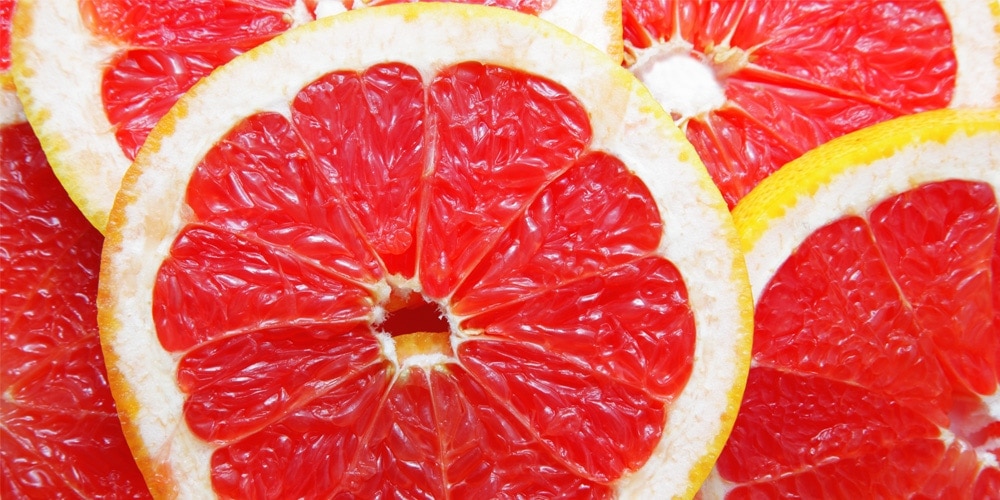
I sometimes mouth a blessing over my meal so by rote that an iPhone app could do it for me.
Sometimes.
Other times the food can incite in me such an over the top reverie that my wife (the only one I’ll do it in front of) must wonder whom it was she married.
Recently a grapefruit half, exposed in a bowl, set off in me spasms of teleological ecstasy. The colors, the smell, the texture, the shapes (a dozen isosceles- like triangles converging in the center while bordered on the other end by what looked like a perfect circle), all soaked in a liquid that glistened in shards of light. Please. If the grapefruit itself had shouted, in King’s English, “God loves you, Goldstein!” it couldn’t have spoken to me any more assuredly of divine love than did that piece of citrus bisected in the bowl before me.
Yes, two plus two of necessity demands four, but what of necessity demands a grapefruit? A self-contained packet of fruit, seed and skin dangling from a rod of inedible wood? So used to this phenomenon (and others like it) we’re obtuse to the raging miracle that it is. “They talked,” wrote G. K. Chesterton, “as if the fact that a tree bears fruit were just as necessary as the fact that two trees and one tree makes three. But it is not.”
Nothing’s inevitable, nothing’s necessary, about this piece of fruit. Everything about it, everything, rests on a farfetched congruence of unlikelihood that our minds, even piggybacked on air-cooled supercomputers, can only skirt about the edges and shadows, especially when it comes to its origins. And modern science’s best shot, that the grapefruit, through eons of natural selection and random mutation, blindly clawed its way to survival?
Oh, my, that’s so too much.
Anyway, as I was calming down enough to (finally) start eating it, something else set me off even more: the seed. I began peeling it apart, finding only white stuff all the way down. I’m supposed to believe that if someone puts this white stuff in dirt (dirt!), adds water and sunlight, then—what? A trunk of inedible wood will grow rod after rod of inedible wood upon which numerous self-contained packets of fruit, seed (white stuff) and skin dangle? And this newly created white stuff, mixed with dirt, water and sunlight, will create another inedible trunk of wood sprouting more rods of inedible wood from which dangle more self-contained packets of fruit, seed and skin? A potentially infinite number of self-contained packets of fruit, seed and skin from a bit of white stuff? If we hadn’t seen it ourselves, why would anyone believe it?
However farfetched, even miraculous, nothing is illogical here. Where logic crashes and burns is at the origins. How, without the grapefruit, did the first seed appear; how, without the seed, did the first grapefruit appear? It’s a vegan version of the chicken-egg dilemma. Just as General Relativity breaks down in the center of a black hole, or as classical physics falls apart in the quantum realm, what we have here, literally growing on trees, is a parallel to the Self-Referential Paradox, where logic itself becomes unmoored.
What do I mean?
Take the sentence, “This sentence is false.” If what it says about itself is true, then, well, just as it says about itself, “This sentence is false.” But how can the sentence be true and false simultaneously? If, however, what it says about itself is false, then the sentence, “This sentence is false” must be true. (If it’s false that it’s false then it must be true.) But how can the sentence be false and true simultaneously?
The Self-Referential paradox reminds me of the grapefruit and seed dilemma. What came first, the seed, out of which the grapefruit emerged; or the grapefruit, out of which the seed emerged? How can it be one or the other?
It can’t because it’s not. The dilemma isn’t a physical question but a rhetorical one. The paradox isn’t with the grapefruit or its seed but with the question about the grapefruit and its seed, which assumes that one preceded the other. But, according to the Bible, that’s not what happened. “Then God said, ‘Let the land produce vegetation: seed-bearing plants and trees on the land that bear fruit with seed in it, according to their various kinds.’ And it was so” (Genesis 1:11, NIV).
No wonder we couldn’t solve the dilemma of which came first because neither did. They were created at the same time, the only logical option. God created the grapefruit “with seed in it.” Voila! With that one text the paradox is solved, and what seemed like an unfathomable mystery becomes obviously simple.
As I stared at the grapefruit, with all the design and beauty flagrant in my face, with the seed of its own species’ (the white stuff) cushioned within, for a moment Eden seemed so real, so close, a bit of pre-fall paradise in my bowl, and I saw more confirmation not only of God’s love for me but why I should love Him back, or, as we’ve been told: “you shall love the Lord your God with all your heart, with all your soul, and with all your strength” (Deuteronomy 6:5). How could we not?
All this, even before I took the first bite.